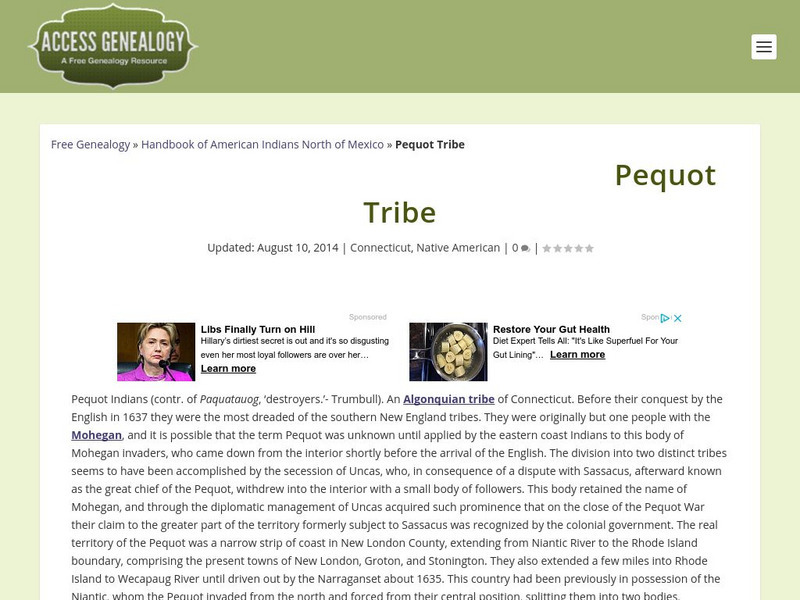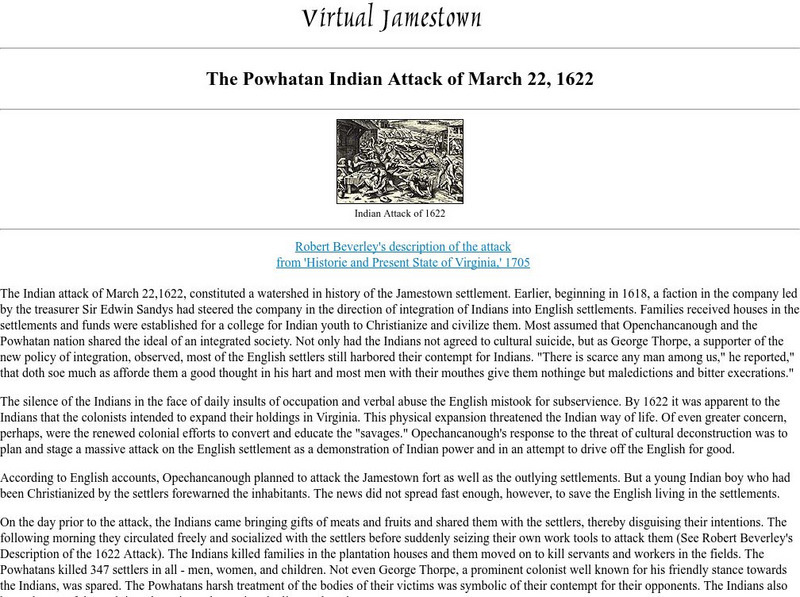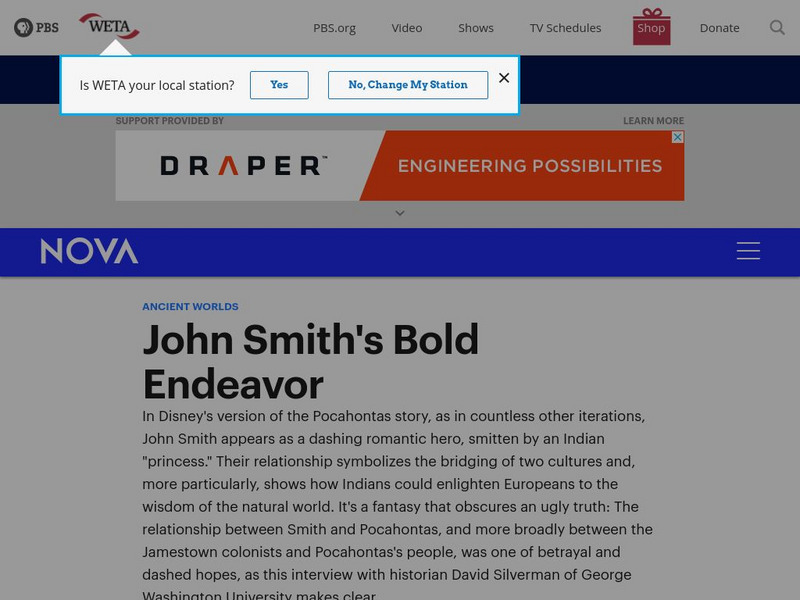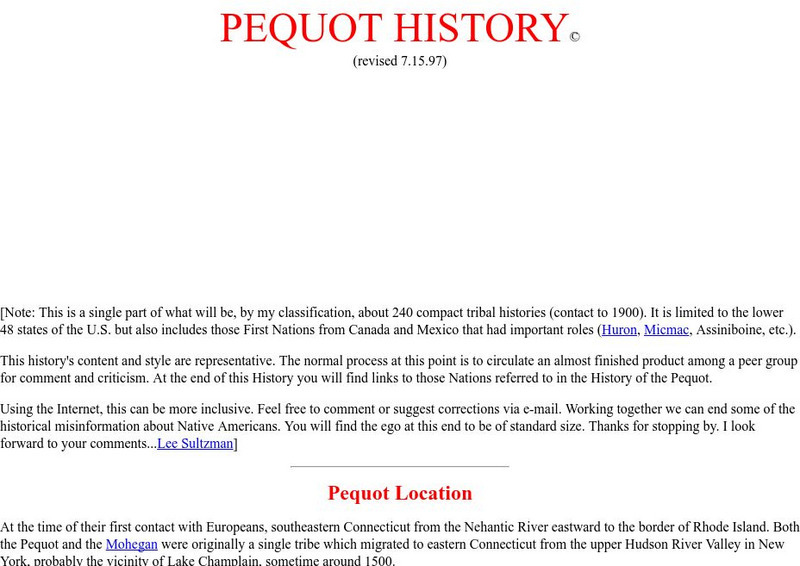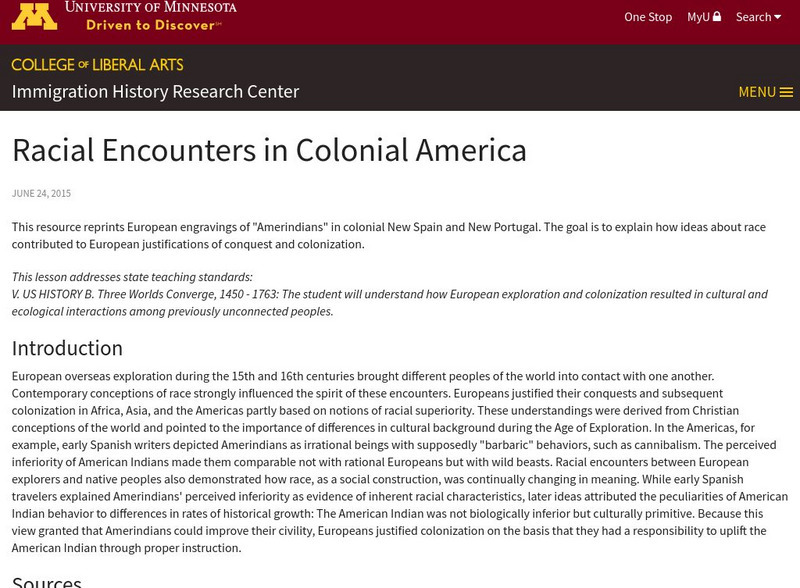Curated OER
I Have No Money, Would You Take Wampum
Students engage in a discussion about their experiences with goods, services, and money. For this bartering lesson, students read The Wampum Bird story and brainstorm their personal experiences with economics.
Curated OER
America: 1763-1776
In this online interactive history worksheet, students respond to 10 short answer and essay questions about the United States between the years 1763 and 1776.
Curated OER
Revolutionary Tea Parties and the Reasons for Revolution
Eleventh graders list some tea party protests other than the Boston Tea Party, then state some possible reasons behind the tea protests. They explain the connection between the Boston Tea Party, other tea parties, and events that...
Curated OER
Only 48 Hours
Pupils compare and contrast experiences of Les Aigner in Hungary and Kennie Namba in Oregon in being forced to relocate to concentration camps during WWII, and explore personal and social effects of prejudice, discrimination,...
Curated OER
English Colonization
Fifth graders discuss their prior knowledge of what colonization means and give their opinions of why someone would want to start a colony. After recording their answers on web map they read about the English colonization in their books;...
Curated OER
ABC's of the Louisiana Purchase
Students investigate the Louisiana Purchase by reviewing the ABC's of the purchase. Each letter of the alphabet is accompanied by information pertaining to the event. They participate in a variety of activities to reinforce the concepts...
Curated OER
John Lawson's Emigration Impact: Review Writing and Answer Questions
Students review the writings of John Lawson. Using his writings, they read comments about them to determine how his writings might have affected emigration to America. They answer discussion questions and share their answers with the...
Curated OER
Lawson's Many Roles
Students examine the life of John Lawson and his many roles he took on during his life. Using their text, they discover the area in which he traveled and lived. They write an essay about his movements and identifying his contacts in...
University of Groningen
American History: Outlines: Colonial Indian Relations
By 1640 the British had solid colonies established along the New England coast and the Chesapeake Bay. In between were the Dutch and the tiny Swedish community. To the west were the original Americans, then called Indians.
University of Groningen
American History: Outlines: Colonial Indian Relations
By 1640 the British had solid colonies established along the New England coast and the Chesapeake Bay. In between were the Dutch and the tiny Swedish community. To the west were the original Americans, the Indians.
Huntington Library
Huntington Library: American Indians and English Settlers in Colonial America
In this instructional activity, 5th graders examine the relations between Indians and the settlers in the 1600s and 1700s. Background information for teachers is included. Students will work in groups to look at three different colonies...
Other
Access Genealogy: Pequot Indian History
A description of the history of the Pequot Indians and their relations with their neighboring tribes and the early English colonists in New England.
Other
Virtual Jamestown: The Powhatan Indian Attack of March 22, 1622
Virtual Jamestown describes the relations between the English colonists and the Powhatan. Causes are listed for the attack of the Powhatan on the settlement at Jamestown.
PBS
Pbs: Nova: John Smith's Bold Endeavor
A historian discusses the relationship between John Smith and Pocahontas, and, more broadly, the competing expectations of the Indians and English colonists in terms of the relationship of the two groups.
US Department of State
U.s. Department of State: Albany Plan of Union, 1754
Learn all about the Albany Plan of Union from this article from the U.S. Department of State. Find out why it was proposed, what the plan would provide for, and the results.
Other
Pequot History
A look at the culture and history of the Pequot Indians, a Northeast Woodlands tribe living in Connecticut.
University of Minnesota
University of Minnesota: Immigration: Racial Encounters in Colonial America
Copper plate engravings offer one example of the racialization of colonized peoples. At the turn of the 17th century, most Europeans' visual conceptions of the Americas came from the engravings of the workshop of Flemish print-maker...
PBS
Pbs: India and Pakistan: 60 Years of Independence
Sixty years after becoming independent of British colonial rule, India and Pakistan are forging their own destinies, while they continue to have sporadic clashes over Kashmir. There are several news reports from August 2007 here, as well...
Other
The Descendants of Henry Doude: Perspectives: The Pequot War
A brief description of the Pequot War, a conflict between the Pequots and the English colonists from the Massachusetts Bay colony. There are two maps showing the location of Indian tribes in 1636 and again in 1639.
Mayflower History
Mayflower history.com: Tisquantum ("Squanto")
A detailed biography of the life of Tisquantum, known as Squanto. Covers some history of the Plymouth Colony and of relations between the colonists and the native peoples.













